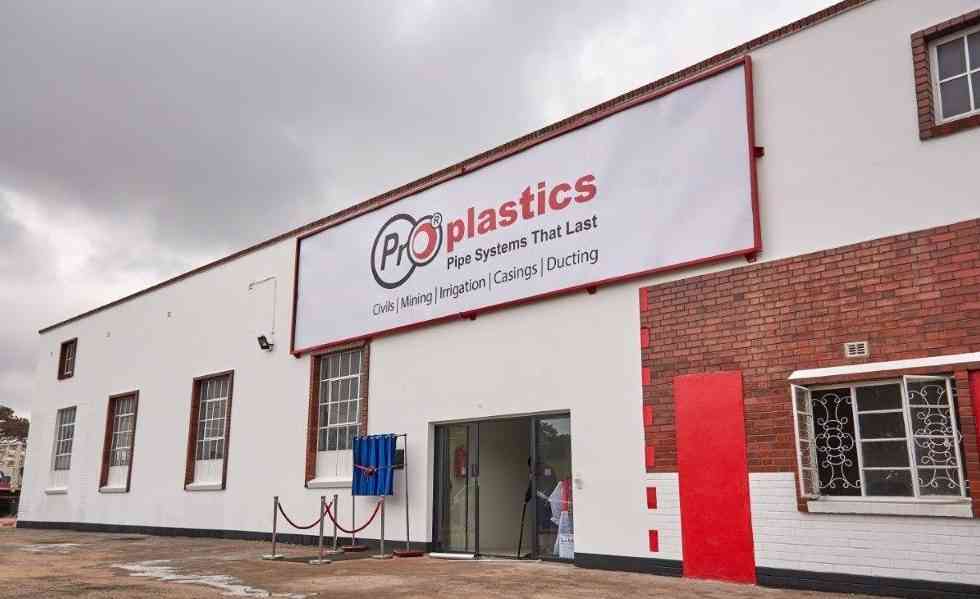
PLASTIC pipes producer Proplastics Ltd said this week it turned to internally generated foreign currency during the year-ended December 31, 2023, after struggling to secure enough stocks on the official markets.
In June 2020, the Reserve Bank of Zimbabwe introduced the foreign currency auction system to help companies to access cheaper foreign currency on an official market.
This was after companies had been forced to turn to an expensively priced black market for their Unites States dollar requirements.
The central bank later established an interbank foreign currency market as part of measures to address the foreign currency problems.
However, many firms have complained that official markets have struggled to supply adequate foreign currency.
“The foreign currency auction floor was slow, and though the introduction of the interbank market brought some optimism at some point, this ceased to be a reliable source of foreign currency by the end of the year,” Gregory Sebborn, chairperson at Proplastics, said in a statement accompanying financial results for the year-ended December 31, 2023.
“Allocations were consistently below the required amounts and the settling of the allocated amounts remained a challenge. To that effect, the group had to rely on internally generated foreign currency to service its foreign obligations.
“The flow of business was severely affected as the local currency continued to rapidly lose value.”
- Lupane man survives axe attack
- Women’s hockey team in impressive start
- Scrap IMTT to save industry, govt urged
- AfDB cuts Zim’s growth projections to 3.5%
Keep Reading
He said this had resulted in an even bigger shift towards the settling of transactions in foreign currency and demand for the group’s products being subdued in the period.
Since re-introducing the local currency in 2019 after initially abandoning it in 2009, the Zimbabwe dollar has been in turmoil.
“Raw material supply was stable during the greater part of the year with a glitch in the last quarter due to adverse weather conditions at the Durban port of entry. Disruption to production was minimal due to proactive strategies in the management of the supply chain,” Sebborn said.
“The prices of the major raw materials continued to retreat in the market from the high prices of the previous year. Raw material prices for the group’s products have, in our view, now reached equilibrium.
“Management has adopted an approach to the procurement of raw materials which involve careful and long-term planning to mitigate the effect of price volatility in the supply chain.”
The firm’s turnover for the full year grew by 22% to US$21,3 million compared to the prior year.
“The growth was underpinned by a 22% increase in sales volumes compared to prior year,” Sebborn said.
“The contribution from the recently commissioned new plant was significant and should continue anchoring sales volumes going forward. Exports sales recorded a 102% growth, with a contribution of 11% to total sales.”
Thus, the current ratio closed the period at 1,37 during the period, an improvement from 1,11 in the prior year.
Sebborn said the group secured contracts in the region, some of which would continue into the current financial year.
As a result of currency depreciation, overall costs rose during the review period.
“Electricity supply remained a significant challenge and the business continued to encounter outages related to load shedding, which resulted in the use of expensive backup generators to ensure continuity of production,” he said.
“A total of 47 days of backup generator usage was recorded during the period resulting in a significantly higher cost of production.”
To alleviate the power challenge, the group embarked on a solar power project that is set to start running by end of the first half of this year.
“The plastic tank manufacturing business, which was commissioned towards the end of 2023 is anticipated to contribute positively to the volumes,” he said.
“Raw material pricing is anticipated to remain stable during the year, from a pricing point of view as well as availability. This will augur well for the business as it will ensure an uninterrupted supply of product to the market.”







